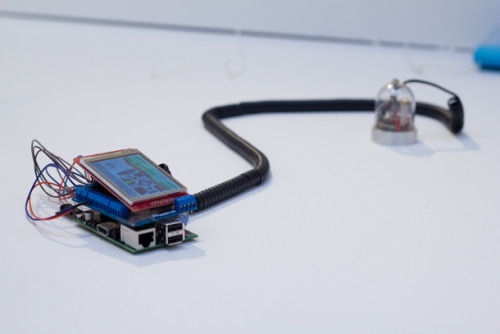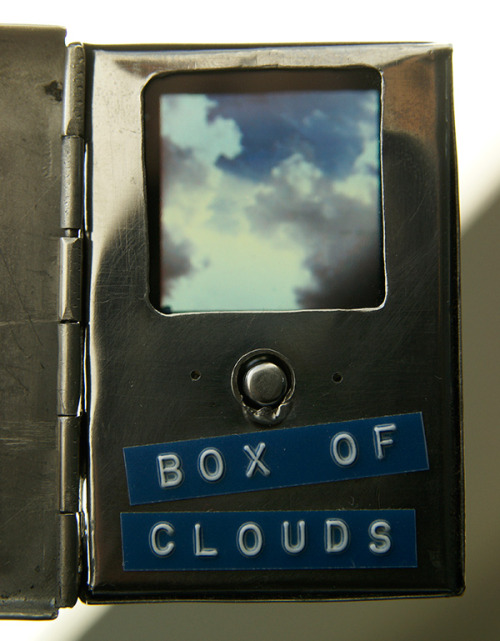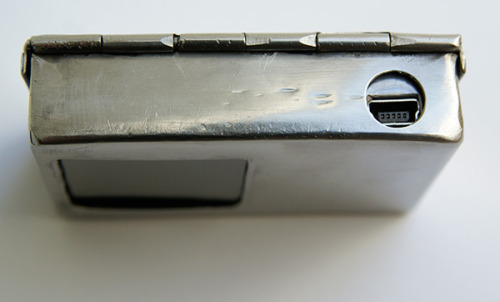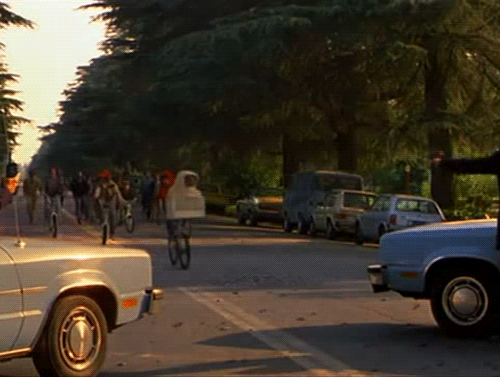I just realized this the tenth year of Pasta and Vinegar! What started as a PhD student notepad is still around. There's less blogging than it used to be but I still intend to keep this blog running. Weak signals and links are generally posted on beta knowledge, but P&V will still feature longer posts, slide decks and other updates.
Thoughts about brain-machine interaction
 Brain-computer interactions is a pet topic I investigate on the side for quite some time; actually since I was an undegrad in Cognitive Sciences back fifteen years ago. In the last ten years, we saw an interesting evolution in terms of hardware possibilities with the advent of headcaps... this led to a novel situation where prototyping interaction was less cumbersome as it used to be. Plus, the availability of software (games, relaxation apps, etc.) also allows to conduct tests and observe the usage of such devices out of the lab. This is a dimension I'm interested in as wearing these devices in public is not neutral (even more than Google glasses?) and lead to weird technical problems (signal noise) or interaction possibilities (why would I need such device when waiting for my bus?).
Brain-computer interactions is a pet topic I investigate on the side for quite some time; actually since I was an undegrad in Cognitive Sciences back fifteen years ago. In the last ten years, we saw an interesting evolution in terms of hardware possibilities with the advent of headcaps... this led to a novel situation where prototyping interaction was less cumbersome as it used to be. Plus, the availability of software (games, relaxation apps, etc.) also allows to conduct tests and observe the usage of such devices out of the lab. This is a dimension I'm interested in as wearing these devices in public is not neutral (even more than Google glasses?) and lead to weird technical problems (signal noise) or interaction possibilities (why would I need such device when waiting for my bus?).
This kind of down-to-earth/blue-collar-design perspective was actually the topic of my talk at the recent American Association for the Advancement of Science meeting 2013 in a session called Advances in Brain-Machine Interfaces: Applications and Implications, along with Miguel Nicolelis, Todd Coleman, Martha J. Farah and Brent Waters.
[slideshare id=16969260&doc=2013-aaas-brain-130306035111-phpapp02]
Why do I blog this? In order to move forward, I'm thinking about a new teaching workshop about this topic next year. The panel as well as the discussion with experts there was quite intriguing and led me to think that there's a good opportunity in these topics when it comes to design/foresight.
Telesound “sounds” intriguing: TeleSound is a cute...
Telesound “sounds” intriguing:
Read MoreTeleSound is a cute speaker containing over 1,000 sounds that you and your friends can trigger from a smartphone or tablet over the internet.
"La définition du problème a toujours pour origine une image mentale, une métaphore capable de..."
““La définition du problème a toujours pour origine une image mentale, une métaphore capable de générer d’autres images et donc des actions, des interactions entre personnes, et des interventions sur la matière. C’est ce saut dans l’imaginaire qui fournit une première définition du problème et jette les bases d’une solution… à l’origine des étapes successives de la résolution du problème, il y a toujours un évènement non formalisable : la naissance d’une métaphore générative, l’apparition d’une idée simple mais capable de synthétiser une quantité d’éléments complexes.””
- Ezio Manzini, La matière de l’invention. I haven’t found the English version of this notion he calls “generative metaphor”.
"But Schybergson noted that the novelty of data quickly wears off and erodes into “chart fatigue.”..."
“But Schybergson noted that the novelty of data quickly wears off and erodes into “chart fatigue.” For wearables to keep our attention over the long term, they need to be “living services,” evolving as we evolve.”
- As described by Sarah Rotman Epps in a conference write-up. I quite like this notion of “chart fatigue”.
"In this paper we question the one-sided thesis that contemporary organizations rely on the..."
“In this paper we question the one-sided thesis that contemporary organizations rely on the mobilization of cognitive capacities. We suggest that severe restrictions on these capacities in the form of what we call functional stupidity are an equally important if under-recognized part of organizational life. Functional stupidity refers to an absence of reflexivity, a refusal to use intellectual capacities in other than myopic ways, and avoidance of justifications. We argue that functional stupidity is prevalent in contexts dominated by economy in persuasion which emphasizes image and symbolic manipulation. This gives rise to forms of stupidity management that repress or marginalize doubt and block communicative action. In turn, this structures individuals’ internal conversations in ways that emphasize positive and coherent narratives and marginalize more negative or ambiguous ones. This can have productive outcomes such as providing a degree of certainty for individuals and organizations. But it can have corrosive consequences such as creating a sense of dissonance among individuals and the organization as a whole. The positive consequences can give rise to self-reinforcing stupidity. The negative consequences can spark dialogue, which may undermine functional stupidity.”
- “A Stupidity-Based Theory of Organizations” by Mats Alvesson and André Spicer, Journal of Management Studies Volume 49, Issue 7, pages 1194–1220, November 2012
This tumblr about weird products found on Taobao is one my...
This tumblr about weird products found on Taobao is one my favorite internet resource lately.
Read More“Miss Cyborg” taken from Sahel digital A picture...

“Miss Cyborg” taken from Sahel digital
A picture that Christopher Kickley used in his Lift13 presentation last week. New African Aesthetic probably.
Read More"The inpossible is a method of practice that uses aspects of Design Fiction to explore a design space..."
“The inpossible is a method of practice that uses aspects of Design Fiction to explore a design space that does not possess a clear or established path to its resolution. Aesthetics play an important role in suspending disbelief in the fiction yet, unlike Design Fiction, inpossible ideas do not stand alone as a form of entertainment, nor do they simply soft-soap a society into accepting change. They actually bring it about. The importance of inpossible projects and events is that they are visionary and propose ideas that require new kinds of practice. As such, they are a journey of discovery that gives rise to ‘inpossible’ events, which may be challenges and opportunities that shape decision making. Inpossible ideas and events are simply ways of working when there are many variables and unknowns in exploring the possibilities of a vision, no matter how far away its realization may seem. Indeed, many inpossible projects and ideas may take more than one lifetime to achieve, However, their importance is not bound up in getting the imagined outcome but in the processes that take places along the way. Inpossible ideas connect people to each other - even across generations - and are not just catalysts for change but the source of novelty. This may be a form of radical ideation, or the creation of new tools and ways of working - and perhaps even a complete revolution in the way that we live!”
- Rachel Armstrong, in a write-up to her Lift13 speech.
The OpenPositioningSystem project by Philipp Ronnenberg (Design...


The OpenPositioningSystem project by Philipp Ronnenberg (Design Interaction, RCA):
“This navigation system is open. Which means it is not run by companies nor control. The goal is to gather interested people on the web platform openps.org to develop the necessary software, hardware and testing processes. Anybody who is interested, from beginner to professionals can participate and contribute their knowledge to the community and this system. To use given things in cities and reuse them for the projects needs is one aim of this project. The idea is to use seismic frequencies, produced by generators in power plants, turbines in pumping stations or other large machines running in factories. These generators, machines etc. are producing seismic activity, distributed over the ground. The sensor prototype can detect seismic waves on the ground, walls or anything with enough contact to the ground. At the current stage of this project the sensor can detect and collect different frequencies.”
Why do I blog this? One of the most interesting locative media project I’ve seen in weeks! The usage of seismic activity detection has a way to collect information about location is fascinating and curious.
Read More“Box of clouds”: A photo viewer key ring dismembered...


Read MoreA photo viewer key ring dismembered and installed into a small tin. I removed the backlight from the LCD to make it transparent; allowing it to be held up to the sky. Images of clouds cycle automatically and the box is charged via USB.
Found here
Found here
Read MoreCrayon Creatures
Crayon Creatures
Read MorePhoto

"“Why are people with Internet fridges always running out of milk and eggs — who are these..."
“
“Why are people with Internet fridges always running out of milk and eggs — who are these obsessive custard-eaters? Why don’t people with internet fridges run out of bacon?
Designers of internet fridges might think everything perishable in the kitchen belongs in the fridge. But there are a great many things that simply don’t belong there. Not to mention all the things that you could buy at a supermarket that aren’t for the kitchen at all. Toothpaste? Shampoo?
Designers of internet fridges might think everything comes in a barcoded or RFID’d package that can be programatically tracked. However, many products don’t come in packages, and even packaged products sometimes don’t include individual barcodes or RFID tags.
Designers of internet fridges probably don’t go grocery shopping (or haven’t paid attention to people getting ready to go grocery shopping). Preparing a shopping list isn’t only about noting what’s gone but what will be gone, given future use, before the next shopping trip. That is, it requires understanding patterns of previous consumption and anticipating future use of ingredients and products.
To construct an internet fridge, first reconstruct the reality of domestic life.”
” Designers of internet fridges don’t have a lot of imagination (as described in this post. Why do I blog this? because I always take the smart fridge as an example of a recurring failure of technology, a bad representation of people’s habits, context and way of living.
-
Nintendo game counselor binders via Kotaku
Nintendo game counselor binders via Kotaku
Read Moretimoarnall: No smartphones symbol. Traditionally ‘no phone’...

Read MoreNo smartphones symbol.
Traditionally ‘no phone’ signs have meant no phone calls, but there’s a new predominant cultural use of phones, which is poking at the internet through touch screens. We should be able to address this behaviour too if we need to, in cinemas or theatres for example.
Go ahead, download and use it: PDF / EPS / high-res PNG.
No Rights Reserved: to the extent possible under law, Timo arnall has waived all copyright and related or neighboring rights to the ‘No smartphones symbol’.
Awesome game with sifteo cubes by @oneliferemains
Awesome game with sifteo cubes by @oneliferemains
Read Morethingsmagazine: This Must be the Place, Roy Lichtenstein, 1965
thingsmagazine: This Must be the Place, Roy Lichtenstein, 1965
Read More"“Loop through the text and make a Dictionary, meaning key - value container. And put all pair..."
“
“Loop through the text and make a Dictionary, meaning key - value container. And put all pair of words as keys and the word following as a value. For example: if you have a text: “a b c a b k” you start with “a b” as key and “c” as value, then “b c” and “a” as value… the value should be a list or any collection holding 0..many ‘items’ as you can have more than one value for a given pair of words. In the example above you will have “a b” two times followed fist by “c” then in the end by “k”. So in the end you will have a dictionary/hash looking like this: {‘a b’: [‘c’,’k’], ‘b c’: [‘a’], ‘c a’: [‘b’]}
Now you have the needed structure for building your funky text. You can choose to start with a random key or a fixed place! So given the structure we have we can start by saving “a b” then randomly taking a following word from the value, c or k, so the first save in the loop, “a b k” (if “k” was the random value chosen) then you continue by moving one step to the right which in our case is “b k” and save a random value for that pair if you have, in our case no, so you break out of the loop (or you can decide other stuff like start over again) When to loop is done you print your saved text string.
The bigger the input, the more values you will have for you keys (pair of words) and will then have a “smarter bot” so you can “train” your bot by adding more text (perhaps chat input?). If you have a book as input, you can construct some nice random sentences.”
” How do Markov Chain chatbots work … reading about markov chain and book writing…
-